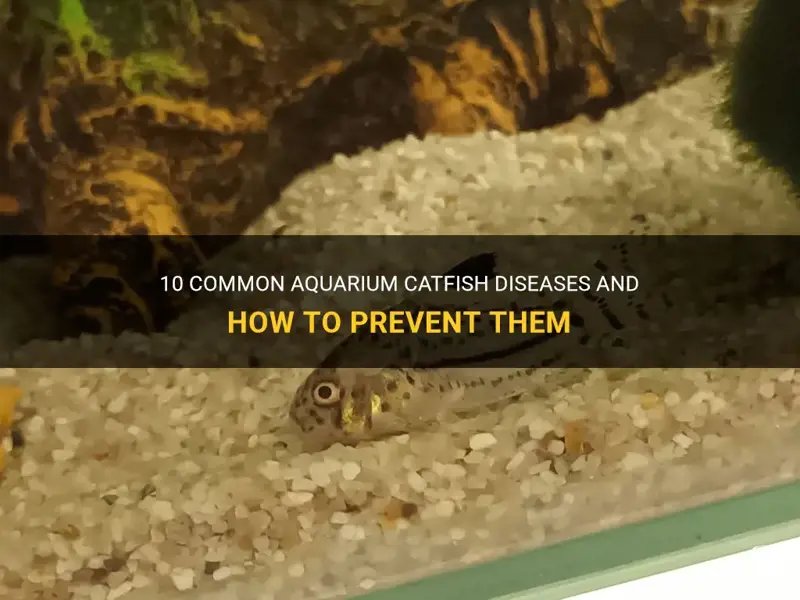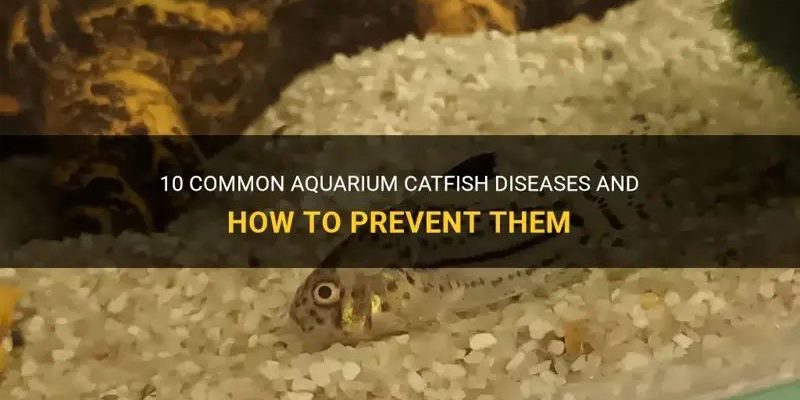
In this guide, we’ll dive deep into common diseases in catfish and how you can prevent them. Think of it as a playbook for ensuring your fishy companions lead long, happy lives. From bacteria and parasites to environmental issues, we’ll cover it all—so you can keep your tank or pond a safe haven for your catfish.
1. Bacterial Infections
Bacterial infections are one of the most common issues catfish face. Imagine if bacteria were tiny bullies in a schoolyard; they can wreak havoc on your fish if they find their way in. Common types of bacterial infections include columnaris, vibriosis, and furunculosis.
Columnaris is often recognized by its cotton-like growths and can affect the skin and gills of catfish. It typically arises from poor water quality or stress. To keep your catfish safe, monitor water conditions regularly and perform partial water changes as needed. Maintaining clean water helps keep bacterial levels low.
Vibriosis is another nasty illness caused by the Vibrio bacteria. This infection can result in ulcers, lethargy, and even death. You might be wondering how to prevent this. Again, good water quality is your first line of defense—keep an eye on salinity levels and temperature. If you notice sick fish, isolating them is crucial to prevent spreading.
2. Parasitic Infections
Parasitic infections can feel like unwelcome guests that just won’t leave. These pesky invaders can cause a range of issues for catfish. Common parasites include ich, flukes, and lice.
Ich, short for Ichthyophthirius multifiliis, is a protozoan parasite that can turn your catfish into spots of white. It thrives in stressed or overcrowded conditions. To combat ich, ensure you’re not overpopulating your tank and regularly check water parameters. If an outbreak occurs, raising the tank temperature can speed up the parasite’s life cycle, making it easier to eliminate.
Then there are flukes, which are flatworms that latch onto your fish’s skin and gills. They can cause inflammation, which is both uncomfortable and harmful. The best prevention is to maintain a clean environment and avoid introducing new fish without proper quarantine measures.
Lice are another troublesome parasite. They can be seen as tiny, moving dots on your catfish. If you spot them, it’s time for action! Remove the infested fish, treat them with appropriate medications, and take steps to clean the environment.
3. Fungal Infections
Fungal infections can pop up when fish are under stress, and the most common one is Saprolegnia. This fungus looks like a cottony mass on the skin of your catfish. Think of it as the fish equivalent of a cold sore—it can arise from wounds or poor water conditions.
To prevent fungal infections, focus on keeping your tank clean and maintaining optimal water quality. If you do spot a fungal infection on your catfish, you may need to treat it with antifungal medications.
Don’t forget about preventing injuries! Sharp decorations or rough surfaces in your aquarium can lead to wounds, making them prone to fungus. Smooth out your setup to keep your fish safe and happy.
4. Environmental Stressors
Sometimes, the biggest threats to your catfish come from their own environment. Just like humans, catfish can get stressed out by changes. Common stressors include poor water quality, inadequate temperature control, and overcrowding.
Maintaining a stable water environment is key. Regularly test parameters like pH, ammonia, and nitrite levels to catch potential problems early. If your water gets too warm or too cold, it can make your fish susceptible to diseases.
Overcrowding is another culprit. If your tank is too small, fish will be constantly battling for space, leading to stress and illness. Follow the stocking guidelines for the species you keep, and ensure they have enough room to swim freely.
5. Nutritional Deficiencies
Just like people, catfish need a balanced diet to stay healthy. If their nutritional needs aren’t met, they can develop deficiencies that impact their health. Poor nutrition can lead to weakened immune systems, making them more prone to diseases.
Make sure you’re feeding your catfish a varied diet that includes high-quality pellets, live food, and greens. When selecting food, look for options that provide the right balance of proteins, fats, and vitamins. Avoid overfeeding—this leads not just to health issues, but can also foul the water.
You might be wondering how to spot the signs of malnutrition. Look for dull colors, lethargy, and unusual behavior. If you notice these, it’s time to reassess their diet and possibly consult an aquarium expert.
6. Prevention Techniques
Now that you know about the common diseases catfish face, let’s talk about prevention. A little effort can go a long way in keeping your fish healthy.
Regular Health Checks: Make it a habit to observe your fish daily. Note any changes in behavior, appetite, or appearance. Early detection of issues is vital.
Maintain Water Quality: Regularly test the water for pH, ammonia, nitrites, and nitrates. Use a reliable water filter and perform partial water changes to keep conditions stable.
Quarantine New Fish: Always quarantine any new additions to your tank for at least two weeks. This helps prevent the introduction of diseases into your established community.
Vaccinations and Treatments: While not as common with fish as with terrestrial animals, some vaccines can help prevent specific diseases. Consult a vet specializing in aquatics for more information.
Stress Reduction: Create a calm environment. Use plants, caves, or other decorations to provide hiding spots, which can help reduce stress among catfish.
7. Conclusion
Caring for catfish can be a rewarding experience, but it requires attention and knowledge. By recognizing common diseases and understanding preventive measures, you give your fish the best chance at a healthy life. Just like you keep your home safe and comfortable, maintaining a healthy environment for your catfish is key.
So, keep an eye on your aquatic friends, regularly check their habitat, provide a balanced diet, and don’t hesitate to take action if something seems off. After all, a healthy catfish is a happy catfish!

